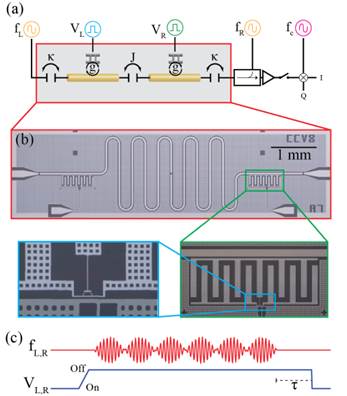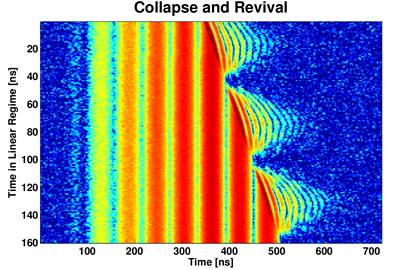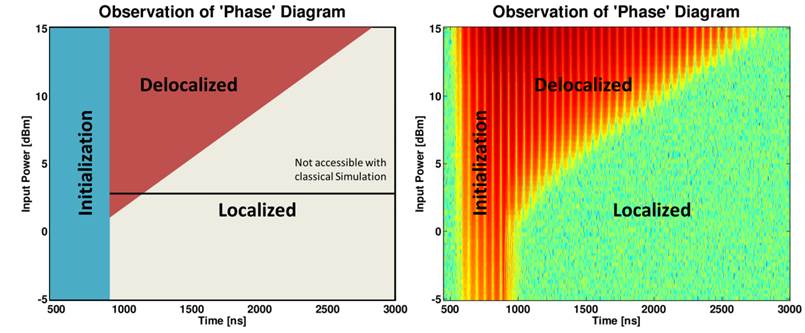
Fig. 1 Device schematic, optical micrograph, and initialization scheme.
Quantum simulators are custom built
systems used to study complicated quantum physics that would be impossible to
simulate using even the most sophisticated classical computers.To date, experiments using quantum simulators have been limited to studying equilibrium physics, an important but limited
subset of the problems of interest. A new architecture, using interacting photons in superconducting circuits, is uniquely suited to tackle the exciting challenges of studying physics. PCCM scientists Türeci and Houck have demonstrated the first major experimental results in this nascent field, based on a theory proposal [1] in 2010 for a dissipation-driven localizatiot-size: 9.0pt; font-family: Arial; mso-ascii-font-family: Arial; mso-fareast-n transition of interacting photons in a superconducting circuit. In the
experiment photons are loaded into one of the two coupled microwave resonators (Fig. 1).

Fig. 2 Rapid collapse and revival signatures are observed for low powers when photons are trapped in monitored cavity. Signal disappears when photons are trappedin other cavity.
Superconducting qubits in each resonator can be used to turn on or off photon-photon interactions in just a few nanoseconds. In the absence of photon-photon interactions, photons collectively tunnel from one cavity to the other - classical dynamic behavior called plasma oscillations. When there are many photons interactions have only a weak effect and
these oscillations are still observed. However, when there are fewer than twenty photons the interactions prevent photons from tunneling and instead trap them into one or the other resonator. When trapped, the photons exhibit collapse and revival, a uniquely
quantum phenomenon. By varying the time at which interactions are turned on any fraction of the photons can be trapped in the left or right demonstrating an impressive level
of control in initializing the system (Fig. 2). The nonequilibrium nature of the system manifests itself as a novel dissipation-driven dynamical transition between the classical behavior and into a regime dominated by quantum effects. A key result of this experiment is the successful reproduction of the expected phase diagram (Fig 3). This system spectacularly demonstrates the ability of a quantum simulator to move beyond the realm of classical
simulation.

Fig. 3 Expected phase diagram (left) and homodyne voltage measurement that reproduces the behavior (right). Simulation on classical computers is limited to photon numbers below the black line on the phase diagram.